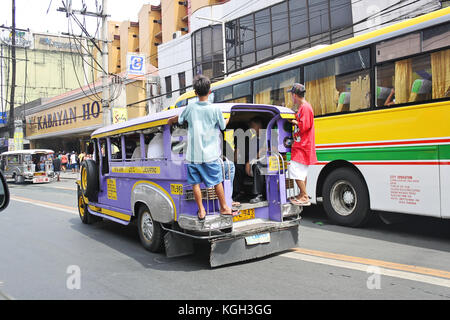Budget-friendly Transit Advertising Philippines for Brand Understanding
Budget-friendly Transit Advertising Philippines for Brand Understanding
Blog Article
Recognizing the Duty of Transportation Advertising in Enhancing Brand Name Visibility and Consumer Involvement
Transit advertising and marketing has actually become an essential component in the advertising landscape, using unique chances for brands to raise their presence and engage customers efficiently. With the capacity to reach a varied and restricted audience throughout their day-to-day commutes, these advertising methods are not just about exposure; they have to do with developing meaningful links with prospective clients. As we discover the complex benefits and innovative methods within transit advertising, it comes to be necessary to take into consideration how these elements collectively influence customer assumption and actions, questioning about their long-term influence on brand loyalty.
Meaning of Transit Advertising
Transportation advertising describes the technique of advertising products, services, or brand names through advertisements put in and around mass transit systems. This form of advertising incorporates a selection of positionings, including posters on buses and trains, digital displays at transportation stations, and covers on the exterior of cars. It aims to get to a diverse target market, maximizing the high foot website traffic associated with public transportation.
Transportation advertising is strategically placed to catch the attention of travelers, that frequently invest substantial time waiting or traveling. By incorporating advertisements into the daily routines of individuals, brands can develop a lasting impression and foster brand acknowledgment. The medium is specifically effective in city atmospheres, where public transport is a main setting of travel.
In addition, transit advertising and marketing can assist in localized targeting, enabling companies to get to specific demographics based upon transit paths and terminal locations. As metropolitan populaces grow and the usage of public transport boosts, this advertising and marketing technique has actually acquired prestige as an important part of incorporated advertising approaches. The dynamic nature of transportation advertising, integrated with its capacity to involve consumers in a captive atmosphere, highlights its significance in contemporary marketing techniques.
Advantages of Transit Marketing
The effectiveness of transportation advertising and marketing depends on its ability to provide a wide variety of advantages to brand names looking for to boost visibility and engagement. One of the main benefits is the considerable reach it supplies; transportation advertisements can effectively target diverse demographics across city locations, getting to both pedestrians and travelers alike. This wide direct exposure significantly boosts brand awareness.
One more advantage is the high regularity of perceptions. As transportation automobiles follow well established courses and stop at multiple areas, they produce recurring direct exposure that enhances brand name messages. This regularity cultivates knowledge, which is critical in customer decision-making.
Transportation marketing is likewise economical contrasted to other media platforms. Given its large reach and possibility for high impacts, brand names usually experience a reduced price per thousand impacts (CPM), maximizing their advertising budget.
In addition, transit advertisements can produce a sense of area connection. By aligning with neighborhood transportation systems, brand names can resonate with regional target markets and promote a sense of neighborhood pride. This localized strategy improves brand commitment and interaction, making transit advertising and marketing a compelling choice for organizations aiming to strengthen their existence out there.

Effective Strategies for Transportation Campaigns
To maximize the influence of transit projects, brands need to take advantage of strategic preparation and execution customized to their target audience. Initially, recognizing the market qualities of the target market using public transportation is critical. This enables brands to develop individualized messaging that resonates with prospective consumers.
Next, picking the right transportation mediums is essential. Whether making use of bus covers, metro posters, or digital displays, each my explanation tool has distinct benefits that can enhance visibility. For instance, vivid visuals on bus wraps can attract focus, while electronic advertisements can be updated often to mirror timely promotions.
Additionally, incorporating a cohesive branding technique throughout transportation systems guarantees uniformity and enhances the brand name's identification. Utilizing eye-catching designs and unforgettable taglines will strengthen brand name recall amongst travelers.
Last but not least, timing is a key element in implementing successful transportation campaigns. Introducing campaigns during top traveling hours or neighborhood occasions can substantially raise exposure and engagement. By utilizing these approaches, brand names can effectively harness the potential of transportation advertising and marketing, cultivating better recognition and link with their target market. Eventually, a well-executed transit campaign can drive substantial growth in brand name visibility and customer involvement.

Determining Effect and Interaction
In assessing the effectiveness of transportation ad campaign, accurate dimension of effect and engagement is necessary for brand names seeking to maximize their advertising techniques. Metrics such as reach, regularity, and perceptions offer fundamental data to evaluate presence. Examining these elements aids figure out the amount of prospective clients are revealed to the promotions during their day-to-day commutes.
Engagement can be more evaluated via consumer communications, such as site web traffic, social networks states, and direct feedbacks to calls-to-action featured in the advertisements. Utilizing devices like QR codes or one-of-a-kind URLs can promote tracking of customer actions directly connected to transportation campaigns. Studies and feedback systems additionally work as useful methods to gather qualitative information on customer understandings and recall of the promotion.
Moreover, advanced analytics and acknowledgment versions can correlate transit direct exposure with this page succeeding buying actions, offering insights into the roi. By employing an extensive technique that integrates measurable and qualitative procedures, brand names can develop a nuanced understanding of their transportation advertising influence. Eventually, this data-driven method makes it possible for brands to refine their campaigns, ensuring they resonate successfully with target audiences and improve general brand exposure.
Situation Researches of Effective Projects
Effective transportation advertising and marketing projects act as engaging instances of exactly how efficient approaches can boost brand name exposure and interaction. Transit Advertising Philippines. One significant situation is the "I Love New York" campaign, which transformed the city's image and brought in numerous visitors. By utilizing metro advertisements, signboards, and bus wraps, the campaign created a solid, natural brand identity, causing a substantial uptick in tourist and regional company patronage
Another exemplary project is Coca-Cola's "Share a Coke" campaign, which leveraged transit advertising to individualize the brand name experience. By featuring popular names on promotional products across various transportation platforms, Coca-Cola fostered a much deeper psychological connection with customers, motivating them to share their experiences on social media.
In addition, the "Got Milk?" project effectively made use of public transport advertisements to get to a broad audience, reinforcing the message of the relevance of milk in a well balanced diet plan. The campaign saw a quantifiable increase in milk usage in target demographics.
These case researches show that when executed attentively, transit advertising and marketing can dramatically improve brand name exposure, foster customer interaction, and drive quantifiable results, showing its vital duty in modern advertising and marketing strategies. - Transit Advertising Philippines
Verdict
In conclusion, transportation advertising and marketing acts as an essential tool for boosting brand exposure and cultivating consumer interaction. By utilizing purposefully placed ads within mass transit systems, brands can successfully get to diverse audiences and strengthen acknowledgment through consistent exposure. The execution of targeted messaging and innovative techniques additionally intensifies the impact of transit campaigns. Inevitably, the capacity to measure engagement and examine successful study underscores the effectiveness of transit marketing in driving brand name commitment and customer communications.
Transit advertising has actually arised as an essential aspect in the advertising landscape, providing unique opportunities for brand names to boost their exposure and engage consumers effectively.Additionally, transportation marketing can assist in localized targeting, allowing organizations to article get to certain demographics based on transit routes and terminal places.In assessing the effectiveness of transportation marketing campaigns, exact measurement of influence and involvement is necessary for brands looking for to enhance their advertising strategies.Effective transit advertising projects serve as engaging examples of just how efficient strategies can boost brand presence and interaction.In verdict, transportation marketing offers as a crucial tool for improving brand exposure and promoting consumer involvement.
Report this page